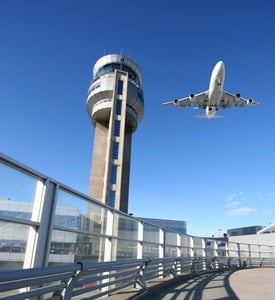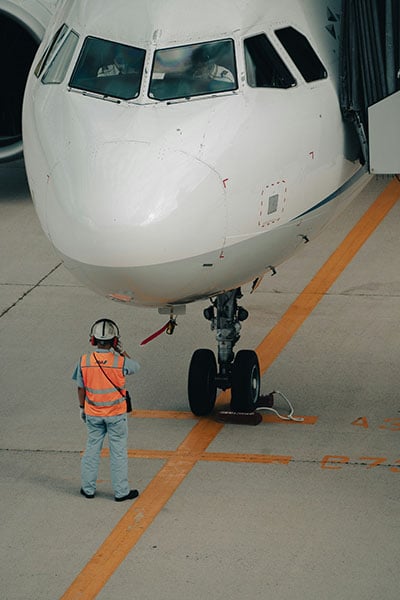What Does Ideal Safety Culture Look Like in Aviation SMS

I have written before that one of the biggest problems with safety culture in aviation safety management systems (SMS) is the way most of us understand what safety culture is. The problem confounds itself when one considers the other related organizational performance topics, such as:
- Just culture;
- Learning culture;
- Flexible culture;
- Reporting culture; and
- Informed culture.
Often the assumption – without ever really defining it – is that safety culture vaguely involves employees who appreciate and participate in safe behavior. This kind of nebulous understanding doesn’t help anyone actively target problem areas of their aviation SMS' safety performance.
Related Aviation SMS Safety Culture Articles
- What Is Safety Culture in the Aviation Industry?
- 6 Types of Safety Culture in Aviation Safety Management System
- 6 Signs of a Mature Aviation Safety Culture
Safety culture can be anything from:
- Safety reporting culture to the ability to identify hazards;
- Level of aviation SMS training to experience in the current operating environment; or
- Interpersonal relationships between employees to the bureaucratic, organizational structure of the SMS.
Many aviation SMS would seriously benefit from some kind of Safety Culture Service. The reasons are simply the following:
- Safety culture will express itself differently in every organization;
- Safety culture does not improve without a focused objective;
- Safety managers are not organizational behaviorists and lack specific safety culture training;
- Organizations need to target safety culture goals based on their organization’s needs; and
- The quality or level of safety culture in your aviation SMS will fluctuate as environmental factors change.
To put it bluntly, safety culture is complex.
Having a solid understanding of the reality and behavior indicators of your safety environment becomes challenging. Safety professionals commonly find it difficult to maintain an objective perspective in evaluating the people and operations that they have spent many years working with. This phenomenon becomes less evident with safety professionals who are new to the organization, as their comfort level is not as high as a manager who has his blinders on and has lost the questioning attitude of "why do we do (you name the process) this way?" Objectivity is easier to maintain when the safety professional is not embedded tightly into the "team."
I maintain that the Human Factor of Teamwork is intimately tied to safety culture and will without question impact an SMS' performance dramatically. Aviation safety management systems that excel universally put their people first and support team dynamics.
What Are Safety Culture Services?

Safety Culture Services are designed to:
- Provide preparation services to evaluate your safety culture;
- Assist in collecting safety culture data;
- Analyze safety culture data;
- Teach you how to understand your safety culture behavior indicators; and
- Implement strategies that improve safety culture in an effort to set safety culture as your aviation SMS' Norm.
Safety culture services are necessarily customized to each organization. Data gathering involves quantitative and qualitative analysis of current safety culture behavior, dynamics, and trends.
Understanding safety culture involves piecing that data together to portray what root attitudes, behaviors, and relationships are influencing your organization, for better and worse. Strategies for implementing safety culture mainly involve overhauling your safety promotion efforts through resources and direct guidance.
Related Aviation SMS Safety Promotion Articles
- 4 Pillars | What Is Safety Promotion Component (the "Overlooked" Pillar)
- Effective Safety Promotion the Informal Way for Aviation SMS
- 10 Best Ways to Promote Safety in Your Aviation SMS [With Free Checklist]
Safety Culture Services Tools
Tools and resources to evaluate and shape safety culture are numerous. Most of these tools should be familiar to most safety professionals, and if your safety culture is a "performing safety culture," then you probably already use the majority of these tools, which include:
- Safety culture surveys;
- Leading indicator analysis;
- Advanced safety behavior workshops;
- Safety newsletters;
- Safety meetings;
- SMS structure and workflows analysis;
- General inspection of historical safety behavior and current trends.
The list goes on, but the tools are designed to gain a comprehensive understanding of each moving part that both positively and negatively influences your organization’s safety culture.
How to Know When You Need Help
The two main questions safety directors and/or managers are probably concerned with at this point are:
- Up to which point can my safety team manage the safety culture in my SMS; and
- How do I know when I need guidance?
Fortunately, I think there are some fairly conspicuous signs that your aviation SMS will need more robust safety culture resources than what you are currently able to provide:
- Failure to move to proactive, leading indicators from reactive, lagging indicators (just look at the distribution of your Risk Assessments);
- Struggle to reach safety reporting goals and/or erratic safety reporting metrics month over month;
- Performance plateaus despite the implementation of new policies or SMS database software;
- General lack of engagement from front-line employees despite trying numerous tactics to increase involvement;
- Constant problems arising from miscommunication – i.e. outcomes are constantly impaired by the inability to effectively communicate;
- HR department is inundated with complaints; and
- High employee turnover.
Related Articles to Increase Aviation SMS Employee Participation
- Why Employees Don't Care About Your Aviation SMS
- 5 Simple Ways to Motivate Employees in Aviation SMS
- How to Reduce Resistance to Aviation SMS With Difficult Employees
Regular, Data-Tracked Safety Culture Surveys

One of the easiest ways to start tracking safety culture data and give yourself a baseline to see “what you are working with” is through safety surveys. These safety surveys would have questions that can each be scored, such as with a 1, 2, or 3 (higher is better).
The same safety culture survey can be given out at regular intervals – such as every six months or annually – to every employee, and the average safety score of employees can be charted over time.
If your safety culture surveys contain multiple categories, such as categories for safety behavior, safety attitude, etc., you will also be able to track average scores over time for various aspects of safety culture. We have seen this employed to great effect.
Beyond simply gathering safety culture data for yourself, these surveys send the message that safety behavior and attitude are being observed and tracked and give impetus to employees to “pay attention” to safety.
Before you start your safety survey, record some base-line measurements in your SMS, such as:
- Current safety reporting rate (number of reports per 100 employees per month);
- Percentage of safety tasks completed on time;
- Percentage of safety messages acknowledged (read file); and
- Number of safety promotion campaigns within the past three months and six months.
The purpose of taking baseline measurements is to compare existing SMS performance to future SMS performance. However, we must ensure that system inputs that affect our chosen metrics are accounted for. For example, if you take a safety culture survey followed up by multiple safety promotion campaigns, how do you account for subsequent changes in SMS performance? Which safety promotion campaign affected performance?
Furthermore, a safety culture survey is a safety promotion tool in itself. Without any additional inputs, a safety culture survey can easily affect SMS performance. This truth becomes more evident when one considers that a survey can do more than simply register current attitudes. Surveys are multi-purpose tools that can:
- Educate employees about certain programs and procedures;
- Increase awareness of highlighted safety items;
- Reduce friction by promoting key protections found in the safety policy; and
- Evaluate attitudes.
Do You Need Safety Culture Services?
Does your safety culture really suffer? What is your safety reporting rate? Ideally, your monthly safety reporting metrics should approach approximately ten safety reports per one hundred employees.
Do you need safety culture services? If you are getting five safety reports per one hundred employees, I would consider increasing safety promotion activities using in-house resources. You may not need to purchase additional safety culture services, as I would first attempt to "influence" SMS performance using:
- Safety newsletters;
- Safety messages;
- Safety meetings; and
- Safety culture surveys.
Before running off "to save the world" with your safety promotion activities, first review your safety policy statement and your non-punitive reporting policy. Do these important policy documents resonate with employees? When employees don't believe your safety policies or there are reasons to doubt management's sincerity, then you will be wasting your time. Well-written safety policies should be written in language that all employees can understand and believe.
Do you have an easy way for employees to submit safety issues? Safety tools affect safety culture. When your safety reporting tools are not user-friendly, employees are certain to avoid repeating bad experiences. They may report one safety issue, but when they think about the pain of submitting the first safety report, you can be assured they will not voluntarily report another safety concern.
Safety reporting forms should be short and to the point. If it takes an employee more than two minutes to submit a safety report, then you should consider reducing the friction. Well-designed safety reporting forms are designed for the reporter, and not to capture every possible variable in existence merely for the convenience of the safety team.
Have You Read
- How to Write Non-Punitive Reporting Policy for Aviation SMS Programs - Free Templates
- Examples of Good Hazard Reporting Forms in Aviation Safety
- 10 Most Important Hazard Reporting Forms Aviation SMS
Where to Find Safety Culture Services?
For operators receiving fewer than five safety reports monthly per one hundred employees, I would consider safety culture services after exhausting in-house resources. If your safety team doesn't have the time to help you improve the safety culture, this would be an immediate indication that external safety culture services should be considered. Several qualified SMS consultants can provide these safety culture services, such as:
In the meantime, do you need help with safety surveys? Below are some templates you can use in your SMS.
Last updated February 2025.








